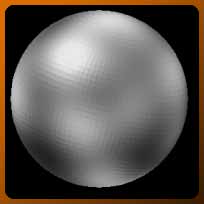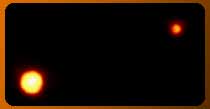You are seeing this message because you are using an out-of-date browser.
Please click here for more information.
Small, Cold, Dark and Lonely Pluto
From its discovery in 1930 until 2006, Pluto was classified as a planet. In the late 1970s, following the discovery of minor planet 2060 Chiron in the outer Solar System and the recognition of Pluto's relatively low mass, there was been a lot of discussion about whether Pluto was a planet at all, given the fact that it is so tiny and its orbit is both an exaggerated ellipse and doesn't fall into the same plane as the orbits of the rest of the planets. On August 24, 2006, the International Astronomical Union (IAU) defined what it means to be a "planet" within the Solar System. This definition excluded Pluto as a planet and added it as a member of the new category "dwarf planet" along with Eris and Ceres. We had been calling it a planet for so long it seemed like a shame to change it. We've left the information up about Pluto for reference.

Image courtesy of: Hubble Space Telescope
Pluto is so far away that even the mighty Hubble Space Telescope can't get us a very good picture. The image at right is the best image to date we have of this distant world. Very little is known about Pluto except that it is very, very cold and exceptionally dark. At this distance, the Sun is very much like all the rest of the stars you would see from its surface.
Pluto was discovered in 1938 by Clyde Tombaugh, who was working at the Percival Lowell observatory in Arizona at the time. There was a lot of discussion about what to name the new planet, but they eventually settled on Pluto, which had been suggested by a schoolgirl from England. It is unknown whether she got the idea from the Disney character of the same name.

Image courtesy of: Hubble Space Telescope
Tiny Pluto has a moon which a little over half the size of the planet itself. In all our solar system, no moon is this close in size to its parent planet. This may, or may not, mean that Charon itself is another asteroid that was captured as it flew by Pluto. There are many such examples of this in our solar system, but we just don't know enough about Pluto to say for sure.
All of the questions we have about this tiny world will likely remain unanswered until we can send a spacecraft to study it. Given the distance to the planet, its size and the expense of mounting such a mission, this is pretty unlikely in the near future.
Find Out More About Pluto
- Pluto Page at the Nine Planets Site
- The Pluto section of the Nine Planets site has more detail about this tiny world.
- New Horizons Mission to Pluto
- There is study being done now for a proposed mission to Pluto and the Kuiper Belt. If this mission is approved, it will launch in 2006 and arrive at Pluto between 2015 and 2017.
Get the Acrobat file for this topic
There is an Adobe® Acrobat® file (12k) for Pluto. You can view the file online by clicking
here. You can save the file on your computer by right-clicking on the link.
You will need the free
Adobe® Acrobat® ReaderTM
to view the file.
This entire site copyright © 2003 Astronomy for Kids - all rights reserved

